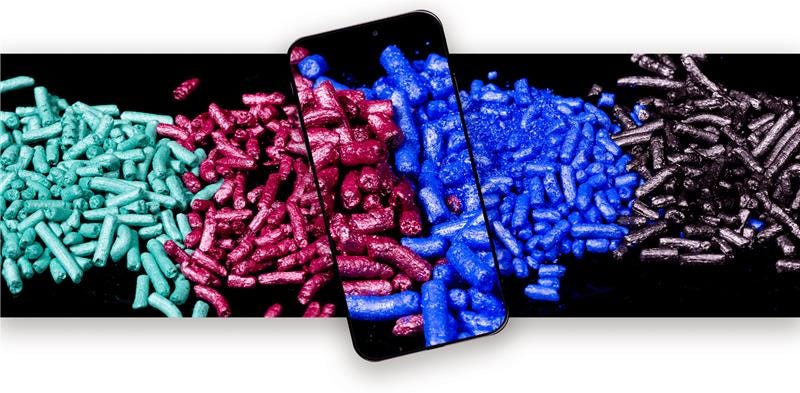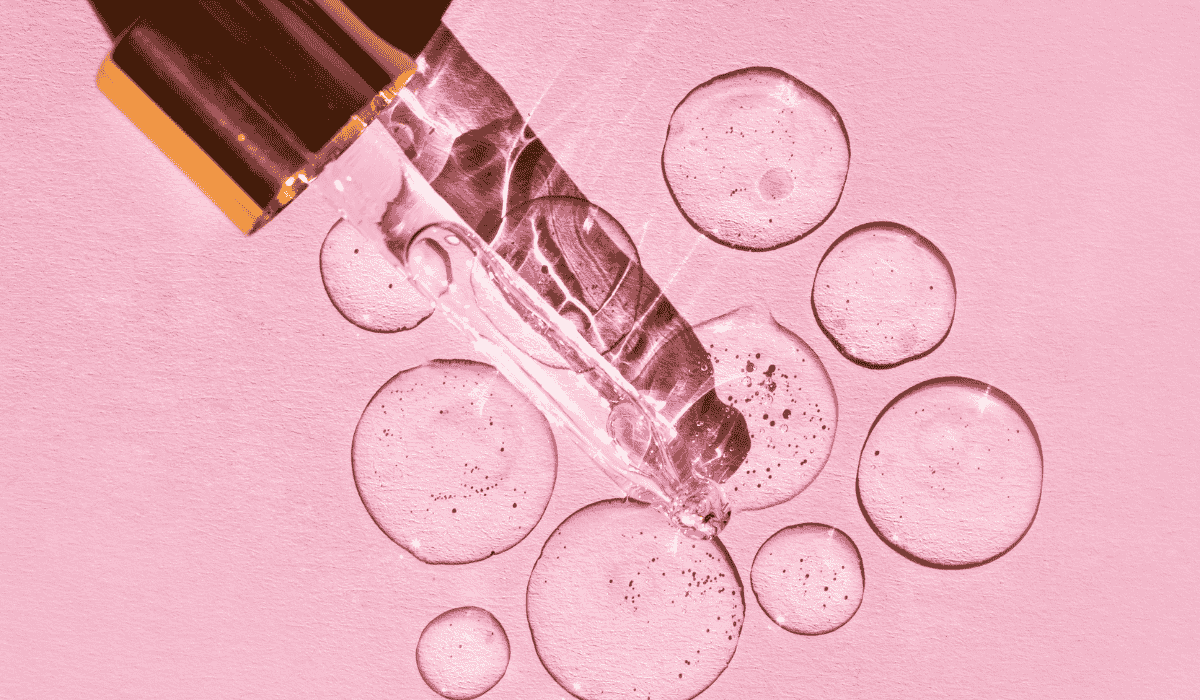Synergistic Antioxidants: How Ferulic Acid Boosts the Efficacy of Vitamin C & E
Antioxidants are essential in skincare because they help protect the skin from oxidative stress caused by environmental aggressors like UV radiation, pollution, and free radicals. Free radicals are unstable molecules that damage skin cells, leading to premature aging, inflammation, and a weakened skin barrier.
By neutralizing free radicals, antioxidants help:
- Prevent premature aging – reducing fine lines, wrinkles, and loss of elasticity.
- Boost skin repair – supporting collagen production and cell regeneration.
- Enhance UV protection – minimizing photodamage when combined with sunscreen.
- Improve skin tone & brightness – reducing hyperpigmentation and dullness.
Among the many antioxidants used in skincare, Vitamin C, Vitamin E, and Ferulic Acid stand out for their synergy. When combined, they create a powerhouse formula that maximizes protection, boosts stability, and enhances overall skin benefits.
This is why formulators and brands continue to innovate with this antioxidant trio—delivering high-performance skincare solutions that consumers love.
Understanding Ferulic Acid: A Potent Antioxidant
Ferulic Acid may not be as widely recognized as Vitamin C or E, but it plays a crucial role in enhancing their stability and effectiveness. Found naturally in plant cell walls, this potent antioxidant helps protect against free radical damage, supports skin brightening, and even boosts UV defense when paired with other actives. Its unique molecular structure allows it to neutralize oxidative stress, making it a key ingredient in many advanced skincare formulations. Let’s dive into where Ferulic Acid comes from, how it works, and why it’s a must-have for formulators and skincare brands.
- Natural Sources: Ferulic Acid is a plant-derived antioxidant naturally found in the cell walls of various grains, fruits, and vegetables. Since plants use Ferulic Acid to protect themselves from UV radiation and oxidative stress, its role in skincare is similar—offering strong antioxidant protection to shield the skin from environmental damage. Some of the richest sources include:
- Rice bran
- Wheat and oat bran
- Apples
- Oranges
- Eggplants
- Coffee beans
- Molecular Structure & Properties: Ferulic Acid is a hydroxycinnamic acid derivative with a phenolic structure, which makes it highly effective at scavenging free radicals. This structure is also responsible for its UV-absorbing and anti-inflammatory properties.
- Chemical Formula: C₁₀H₁₀O₄
- Solubility: Partially water-soluble but more stable in alcohol or lipid-based formulations.
- pH Sensitivity: Functions best in slightly acidic to neutral pH (3.5-5.5).
- Antioxidant & Skin Benefits: Ferulic Acid’s primary role in skincare is as a potent antioxidant that enhances stability and efficacy when combined with other actives. Key benefits include:
- Neutralizes Free Radicals – Protects skin from oxidative damage that leads to wrinkles, dark spots, and loss of elasticity.
- Enhances UV Protection – Works synergistically with Vitamin C & E to reduce sun-induced skin damage.
- Boosts Skin Brightness – Inhibits enzymes that trigger melanin overproduction, helping with hyperpigmentation.
- Prevents Collagen Breakdown – Shields skin from glycation (a process that weakens collagen and accelerates aging).
- Stabilizes Other Antioxidants – Helps prevent Vitamin C from oxidizing too quickly, making formulations more effective.
This unique combination of antioxidant, photoprotective, and skin-brightening properties makes Ferulic Acid a must-have in high-performance skincare formulations.
How Ferulic Acid Neutralizes Free Radicals and Prevents Oxidative Stress
Ferulic Acid is a potent antioxidant that works by donating electrons to unstable free radicals, neutralizing them before they can damage skin cells. Free radicals are highly reactive molecules generated by UV exposure, pollution, and other environmental aggressors. When left unchecked, they cause oxidative stress, which leads to:
- Collagen breakdown → Wrinkles and loss of elasticity
- Hyperpigmentation → Uneven skin tone and dark spots
- Inflammation → Redness and sensitivity
- Weakened skin barrier → Increased dryness and irritation
How Ferulic Acid Stops This Process
Ferulic Acid's phenolic structure allows it to effectively neutralize multiple types of free radicals, including:
- Superoxide anions (O₂⁻) – Commonly produced by UV exposure
- Hydroxyl radicals (•OH) – Highly reactive and damaging to skin cells
- Peroxyl radicals (ROO•) – Contribute to lipid peroxidation and cell membrane damage
By breaking this chain reaction, Ferulic Acid prevents oxidative damage before it can degrade collagen, accelerate aging, or trigger inflammation. Additionally, its unique ability to regenerate and stabilize other antioxidants—particularly Vitamin C and E—makes it even more powerful in fighting oxidative stress.
This synergy is why Ferulic Acid is a staple ingredient in high-performance antioxidant serums designed to protect and repair skin from daily environmental stressors.
The Challenge of Stability in Antioxidants and How Ferulic Acid Helps
One of the biggest challenges in formulating with antioxidants like Vitamin C and Vitamin E is their instability. These ingredients are highly effective at neutralizing free radicals, but they are also prone to degradation when exposed to air, light, or heat.
Why Stability Matters in Antioxidant Formulations
- Vitamin C (Ascorbic Acid) oxidizes rapidly, turning yellow or brown as it degrades. This reduces its potency and can make the formula ineffective.
- Vitamin E (Tocopherol) is lipid-soluble and susceptible to oxidation, which diminishes its ability to protect skin from oxidative stress.
- Both Vitamin C & E work best together, but without proper stabilization, their benefits are short-lived.
How Ferulic Acid Enhances Stability
- Prevents Oxidation – Ferulic Acid scavenges free radicals before they can degrade Vitamin C and E, extending their shelf life and efficacy.
- Enhances Photostability – Studies show that Ferulic Acid reduces photodegradation when combined with Vitamin C and E, making the formula more resistant to UV exposure.
- Boosts Antioxidant Performance – When paired with Vitamin C and E, Ferulic Acid doubles photoprotection and improves overall skin defense against environmental aggressors.
- Improves Absorption – Ferulic Acid’s unique molecular structure enhances the penetration of Vitamin C, making it more bioavailable for the skin.
Real-World Impact: Why Formulators Use This Combination
Thanks to its stabilizing properties, Ferulic Acid is a go-to ingredient in antioxidant serums and anti-aging treatments. It allows skincare brands to develop longer-lasting, more effective formulations that provide consistent results, even after prolonged storage.
By solving the instability problem, Ferulic Acid unlocks the full potential of Vitamin C and E, making it a game-changer in advanced skincare formulations.
The Science of Vitamin C, Vitamin E & Ferulic Acid Together
Vitamin C: The Brightening & Collagen-Boosting Antioxidant
Vitamin C (L-Ascorbic Acid) is one of the most well-known antioxidants in skincare, thanks to its powerful brightening, anti-aging, and protective properties. It works by:
- Inhibiting melanin production, reducing hyperpigmentation and dark spots for a more even skin tone.
- Stimulating collagen synthesis, helping to improve skin elasticity and reduce the appearance of fine lines and wrinkles.
- Neutralizing free radicals, protecting against oxidative stress caused by UV exposure and pollution.
Despite these benefits, Vitamin C is highly unstable and prone to oxidation, which is why it needs Ferulic Acid to maintain its potency.
Vitamin E: The Lipid-Soluble Skin Protector
Vitamin E (Tocopherol) is a fat-soluble antioxidant that works within the skin’s natural lipid barrier. Its key roles include:
- Reinforcing the skin barrier, helping to lock in moisture and improve skin resilience.
- Protecting cell membranes, reducing oxidative damage that leads to premature aging.
- Enhancing UV defense, particularly when combined with Vitamin C, to minimize sun-induced skin damage.
However, Vitamin E can lose its antioxidant power when exposed to oxidative stress—this is where Ferulic Acid comes in.
Ferulic Acid: The Ultimate Stabilizer & Performance Booster
Ferulic Acid not only fights free radicals on its own but also enhances the stability and performance of both Vitamin C and Vitamin E:
- Stabilizes Vitamin C – Prevents oxidation, extending its shelf life and making it more effective in formulations.
- Regenerates Vitamin E – Helps maintain its antioxidant power, prolonging its protective effects.
- Improves Photoprotection – When combined, this trio has been shown to double UV protection, making it a powerful anti-aging and skin-protective formula.
By working together, Vitamin C, Vitamin E, and Ferulic Acid create a synergistic antioxidant powerhouse that provides superior skin protection, brightening, and anti-aging benefits—making them a gold standard in high-performance skincare formulations.
How Formulators Can Take Advantage of This Synergy
For cosmetic chemists and skincare brands, leveraging the synergy between Ferulic Acid, Vitamin C, and Vitamin E allows for the creation of high-performance antioxidant formulations that offer long-lasting protection and visible skin benefits. Here’s how formulators can maximize this powerful combination:
- Optimize Stability – Use Ferulic Acid to prevent oxidation and extend the shelf life of Vitamin C and E in serums, creams, and emulsions.
- Enhance UV Protection – Incorporate this trio into daytime skincare products, as the combined effect has been shown to double photoprotection and improve skin resilience.
- Combine with SPF – While not a replacement for sunscreen, these antioxidants work synergistically with UV filters to reduce sun-induced oxidative damage.
- Use the Right pH & Formulation Techniques – Vitamin C (L-Ascorbic Acid) is most stable at a pH of 3.0-3.5, and Ferulic Acid is compatible within this range. Choose the right emulsifiers and solvents to enhance solubility and efficacy.
- Innovate Beyond Serums – While serums are the most common format, formulators can experiment with waterless formulations, encapsulated delivery systems, and emulsified creams for sustained release and enhanced skin penetration.
Emerging Trends in Antioxidant Skincare
Antioxidant skincare continues to evolve, with new innovations that go beyond traditional formulations:
- Encapsulation for Enhanced Stability – Brands are exploring liposomal and microsphere technology to extend the efficacy of Vitamin C, E, and Ferulic Acid in products.
- Biofermented & Natural Derivatives – Sustainable and naturally derived antioxidants, including ferulic acid from rice bran, are gaining popularity in clean beauty.
- Multi-Layered Antioxidant Defense – Formulators are combining Ferulic Acid with newer antioxidants like Glutathione, Resveratrol, and Coenzyme Q10 to create comprehensive anti-aging complexes.
- SPF + Antioxidant Hybrid Products – The market is shifting towards daily moisturizers and sunscreens infused with antioxidants, reinforcing UV protection while hydrating and repairing skin.
As consumer demand for antioxidant-rich skincare grows, now is the perfect time to experiment with Ferulic Acid, Vitamin C, and Vitamin E in your formulations. Whether you’re developing a stabilized serum, an antioxidant-boosted SPF, or a next-gen anti-aging moisturizer, this trio delivers scientifically backed, high-performance results.
Ready to start formulating? Browse high-quality Ferulic Acid and synergistic antioxidants to create cutting-edge skincare solutions that stand out in the market!



